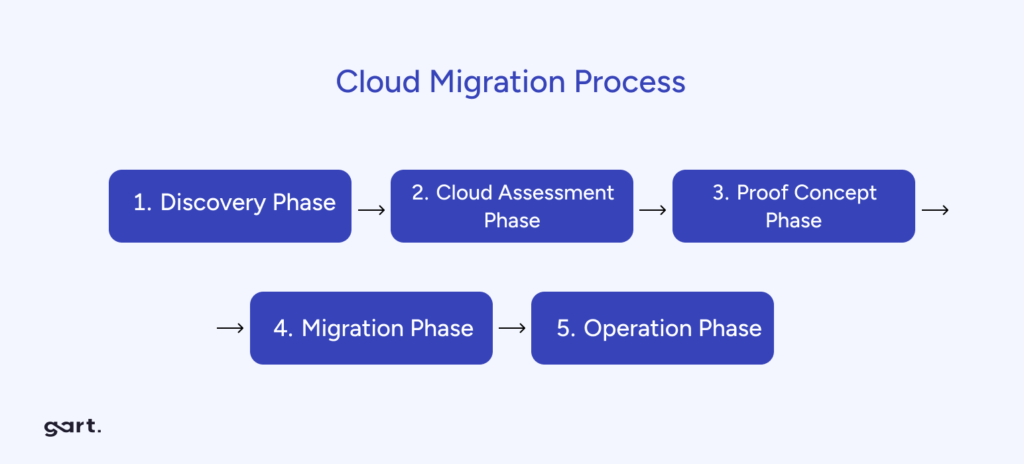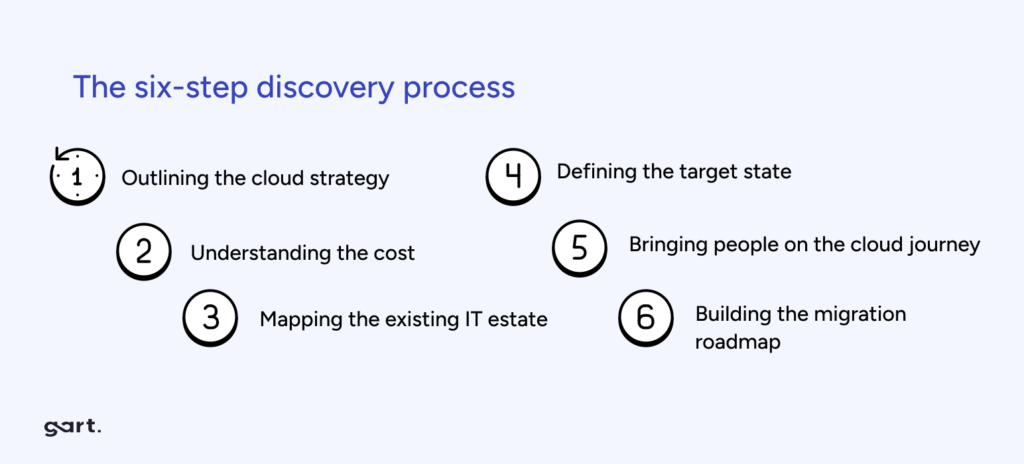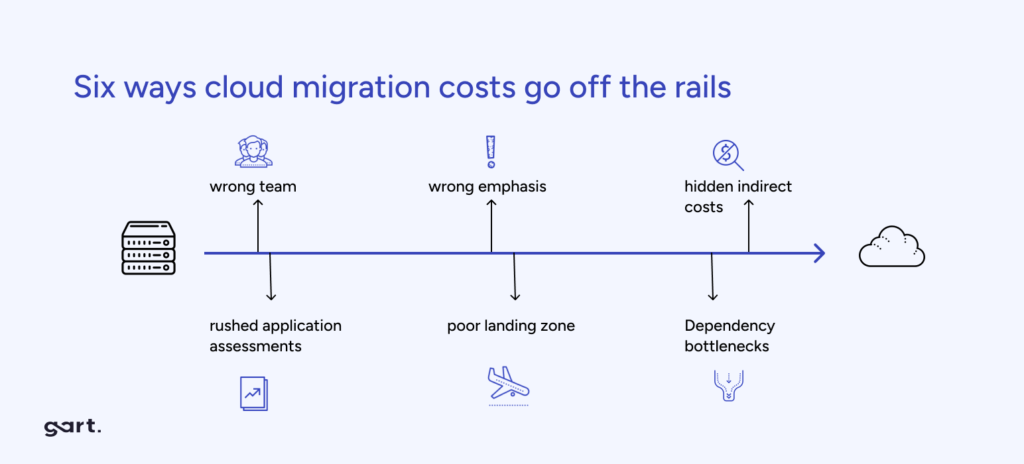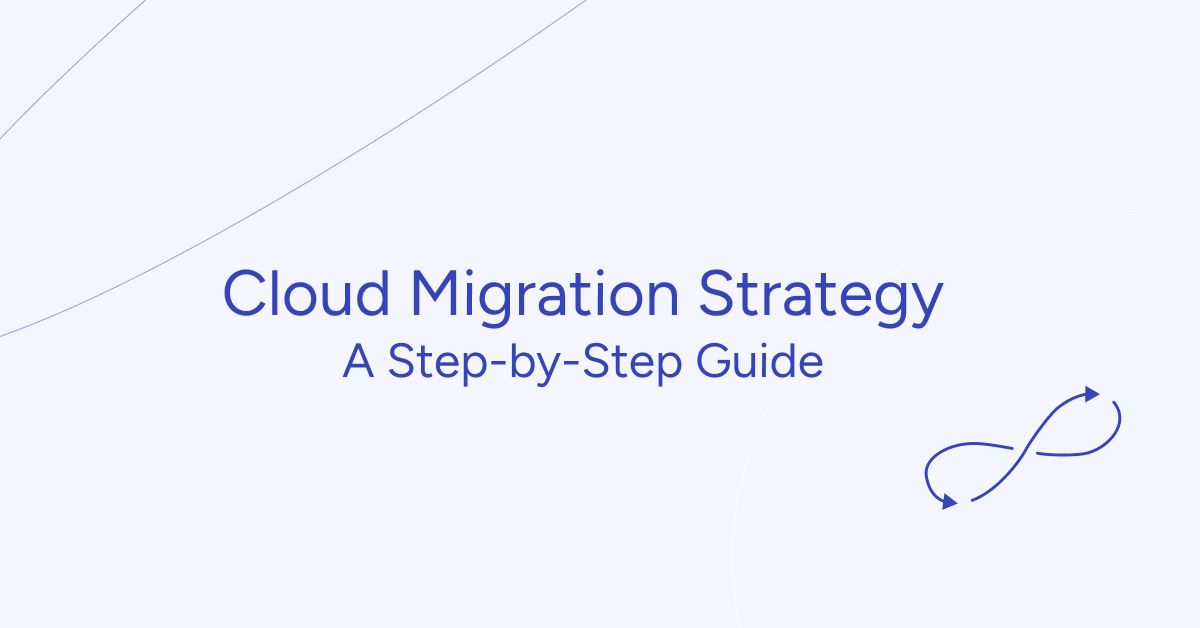Cloud migration involves a series of steps, including discovery, assessment, proof of concept, migration, and operation phases. This article zooms in on the initial stage – the discovery phase.
Often, organizations skip proper planning and rush into execution, a risky approach. While it might work for smaller projects, it can lead to complications in complex endeavors like cloud migration.
This process impacts various company departments, necessitating adequate time investment in discovery and assessment to prevent unexpected and costly issues.
The cloud migration discovery phase assists in understanding cost structures, compliance needs, current technologies, dependencies, and infrastructure requirements. Let’s delve into the significance of this essential first step.

What is Discovery Phase in cloud migration process?
Over time, both applications and infrastructure undergo changes, gaining new features and complexity. However, these modifications are often not meticulously documented, leading to challenges during cloud migration. IT discovery is the process of identifying and documenting the current state of a client’s infrastructure, applications, relationships, and dependencies.
The first step in any migration is the discovery phase, where we examine and document data assets and business requirements, evaluating associated risks. Data assets include datasets, pipelines, and downstream applications, necessitating identification and documentation of their interdependencies. This inventory becomes a reliable benchmark for validating our migrated solution.
Discovering business requirements is complex, requiring domain knowledge and a consulting framework to uncover implicit, hidden requirements. Failures in migration projects often stem from unspoken expectations or requirements. Risks, whether technical, business, or organizational, must be explicitly identified and documented to provide an overview, enabling a focus on potential budget or trust issues in later stages.
The discovery process aims to grasp your current position and navigate towards your future target state. It boils down to six vital aspects:
- Outlining the cloud strategy
- Understanding the cost
- Mapping the existing IT estate
- Defining the target state
- Bringing people on the cloud journey
- Building the migration roadmap

Efficient discovery is the cornerstone of migrating a data platform.
Defining the Cloud Strategy
To kick off the discovery process, it’s essential to formulate a migration strategy that aligns with your business goals. These objectives, unique to your organization and industry, may involve leveraging the cloud to:
- Cut costs
- Foster quicker innovation
- Explore new customer interaction methods
- Expand into new markets
- Boost operational efficiencies
- Attain sustainability targets

Understanding Costs in Cloud Migration
A critical factor influencing the decision to migrate to the cloud is cost. For a compelling business case, it’s crucial to comprehend not only the migration costs but also the value it brings. During the discovery phase, delve into the total cost of ownership (TCO) and return on investment (ROI) of your current setup and the anticipated target state. Assess the expenses of the transition itself, from decommissioning the old infrastructure to necessary tooling and training for the new state.
Consider four key areas when examining costs:
- The current setup’s expenses, covering licenses, IT labor, and facility costs.
- Anticipated costs for the target state, including licenses, servers, storage, network, and support for the identified workloads.
- Migration costs, encompassing the overall migration process, decommissioning, tooling, and potential hiring or training.
- Business value, which includes indirect benefits like staff productivity, operational resilience, and business agility.
While less tangible, these business values are crucial benefits of migration. Track them using metrics co-developed with a cloud specialist. Presenting these costs and values effectively forms the business case for cloud migration, essential for gaining senior stakeholder buy-in.

Sustainability in Cloud Migration
We explore sustainability in the context of designing, building, and running IT services to decrease carbon emissions. Every large-scale business has sustainability on its agenda, emphasizing the emerging “Eco-First IT” approach that prioritizes reducing environmental impact in software design and delivery.

If sustainability aligns with your strategic goals, Amazon Web Services (AWS) provides detailed metrics to monitor emissions by project, product, region, and time. AWS also offers features to easily decrease emissions, such as placing resources in cleaner regions or removing idle resources. Now is an opportune moment to evaluate the motivations behind your cloud migration.
Similarly, Azure, Microsoft’s cloud platform, also prioritizes sustainability. Azure provides robust tools and metrics to track carbon emissions associated with your cloud usage. It offers features like Azure Region Selection, enabling you to choose data center locations powered by renewable energy sources. Additionally, Azure’s Advisor service provides recommendations to optimize resource usage, contributing to a more eco-friendly cloud environment. Now is an opportune moment to delve into the motivations behind your cloud migration and explore the sustainability offerings provided by Azure.
Mapping Your IT Infrastructure
In the discovery phase, a crucial outcome is gaining a precise understanding of your existing IT infrastructure and the applications and services it hosts. Only by fully mapping your current setup can you chart the necessary steps to reach your desired operating model. This process involves identifying details such as server configuration, usage, and behavior, storage, network utilization, workloads and dependencies, and security gaps.
To streamline this discovery, the AWS Migration Evaluator serves as an automated tool, efficiently navigating your network to pinpoint existing infrastructure. This migration assessment service aids in building a directional business case for planning and migration. Using an agentless collector for on-premises data collection, it evaluates whether on-premises instances are appropriately provisioned and suggests compatible AWS instances for optimal performance at a reduced cost.
An added benefit of AWS Migration Evaluator is its ability to identify licenses eligible for migration to the cloud, offering a cost comparison between Bring Your Own License (BYOL) and License Included options. Additionally, it provides a cost projection summary for re-hosting at AWS based on usage patterns, including a breakdown of infrastructure costs.
Similarly, Azure provides a comparable tool to facilitate the migration journey. The Azure Migration Assessment service offers a comprehensive analysis of your current on-premises environment. Leveraging this service, you can evaluate the adequacy of your existing setup and receive insights into the compatibility of Azure resources. The tool assesses the performance of on-premises instances, recommends suitable Azure alternatives, and provides valuable cost projections for hosting your infrastructure on the Azure platform.
Crafting Your Migration Roadmap
As you prepare for a migration roadmap outlining your transition from the current state to the target state, it’s crucial to recognize the irreplaceable value of human experience. Automated tools, while useful, may overlook critical elements in this context. Mapping dependencies in your existing architecture during the discovery phase is essential for understanding the potential impact of migration on your processes and anticipating how operations will evolve in the cloud. Without this understanding, effective cost management can become challenging.
During this phase, seasoned cloud experts play an indispensable role. They go beyond tool-generated findings, conducting qualitative investigations and interviewing relevant stakeholders. The outcome is a pragmatic roadmap that aligns with your strategic priorities, organizational structure, and the expertise of your staff and users.
Consider Gart engineers as potential experts to guide you through this crucial phase. Our experience and insights can enhance the development of a practical migration roadmap tailored to your unique requirements and objectives.
Start your migration journey today !
See how we can help to overcome your challenges









